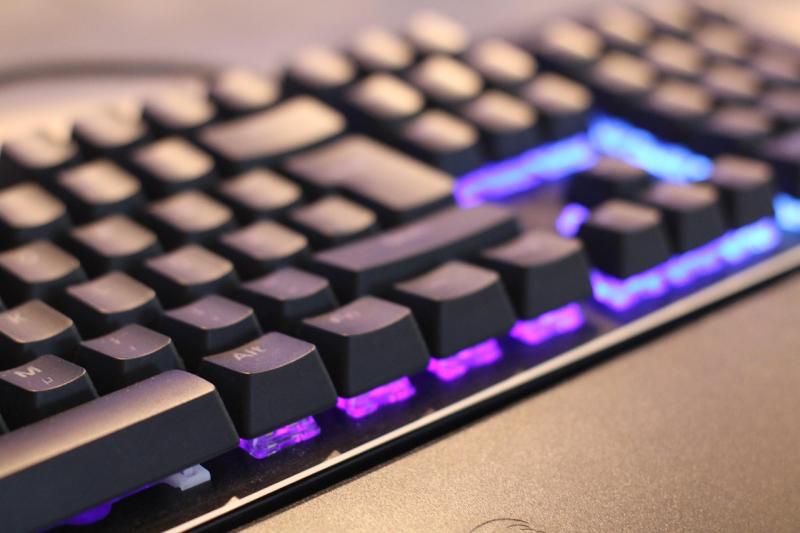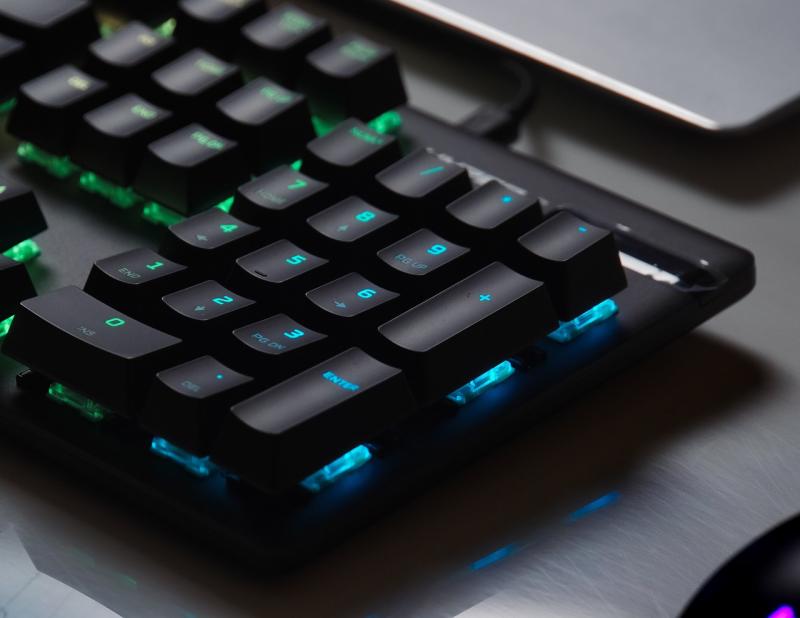When it comes to choosing a keyboard for your computer setup, the decision often boils down to two main options: mechanical keyboards and regular keyboards. While both serve the same purpose of inputting text and commands, there are fundamental differences between the two that make them distinct from one another.
Mechanical Keyboards
Mechanical keyboards have gained popularity among gamers, programmers, and typists due to their unique feel and superior performance. Unlike regular keyboards that use a rubber dome or membrane to register key presses, mechanical keyboards feature individual mechanical switches under each key. These switches leverage physical mechanisms to provide a tactile feel and a satisfying click sound each time a key is pressed. The result is a significantly more responsive and accurate typing experience.
Moreover, mechanical keyboards offer various switch types, including linear, tactile, and clicky switches, with each type providing a different typing experience. These switches often require higher actuation forces and provide a consistent and perceptible actuation point, allowing for enhanced precision and reduced typing fatigue.
Regular Keyboards
On the other hand, regular keyboards, also known as membrane keyboards, use a rubber dome or a membrane to register key presses. When a key is pressed, it compresses the rubber dome or pushes against the membrane, completing the circuit and sending the corresponding signal to the computer. While regular keyboards are a more budget-friendly option and are widely used, they often lack the tactile feel and responsiveness that mechanical keyboards offer.
Regular keyboards are generally quieter, making them ideal in settings where noise might be an issue. Their low-profile design makes them more compact and portable, providing users with a lightweight option for on-the-go usage. Additionally, the rubber dome or membrane switches tend to require less actuation force, which can be advantageous for users who prefer a lighter touch while typing.
The Science Behind Mechanical Keyboards: Why They're Different
When it comes to keyboards, mechanical keyboards stand out from regular keyboards due to the unique technology behind them. While regular keyboards use a rubber dome or membrane under each key, mechanical keyboards utilize individual mechanical switches. These switches are made up of several components, including a spring and metal contacts, which provide a distinct feel and sound when typing.
One key advantage of mechanical keyboards is their durability. The mechanical switches used in these keyboards are designed to withstand millions of keystrokes, making them more resistant to wear and tear compared to regular keyboards. This durability is especially beneficial for avid typists or gamers who require fast and accurate keystrokes, as mechanical keyboards can maintain their performance over extended periods of heavy use.
The science behind mechanical keyboards also contributes to their enhanced tactile feedback. The mechanical switches provide a tactile bump or click when pressed, giving users a satisfying tactile and auditory response. This feedback can improve typing accuracy and speed, as it allows typists to feel precisely when a key is actuated without having to press it all the way down. Many users find this feature to be not only functional but also enjoyable, as it provides a more satisfying typing experience.
Furthermore, mechanical keyboards often offer customizable options. Different types of mechanical switches, such as linear, tactile, or clicky, provide varying levels of feedback and actuation force. This allows users to choose a switch type that aligns with their personal preferences and typing style. With regular keyboards, on the other hand, users generally have limited customization options in terms of key feel and responsiveness.
Navigating the World of Regular Keyboards: What Sets Them Apart
Regular keyboards, otherwise known as membrane keyboards, have been the standard for many years and are widely used in everyday devices such as laptops, desktop computers, and tablets. These keyboards utilize a rubber or silicone membrane beneath the keys to register keystrokes. While they may seem similar, there are key differences that set them apart from mechanical keyboards.
One key characteristic of regular keyboards is their quiet operation. The rubber or silicone membrane dampens the sound produced when each key is pressed, resulting in a softer and more subtle typing experience. This makes regular keyboards a popular choice for libraries or shared workspaces where minimal noise is desired.
Another distinguishing feature of regular keyboards is their affordability. Since they are mass-produced and widely available, they are typically more budget-friendly compared to their mechanical counterparts. This makes them an attractive option for users seeking a functional keyboard at a reasonable price.
Despite their advantages, regular keyboards may lack the tactile feedback and durability that mechanical keyboards offer. The absence of individual mechanical switches can sometimes result in a less satisfying typing experience, especially for users who prefer a more tactile and responsive feel. Additionally, regular keyboards often have a shorter lifespan compared to mechanical keyboards, as the rubber or silicone membrane can wear out over time.
Evaluating Ergonomics: Which Keyboard Style is Right for You?
When it comes to typing on a computer, the choice of keyboard can have a significant impact on your overall comfort and productivity. Two popular options in the market are mechanical keyboards and regular keyboards. Understanding the differences between the two can help you make an informed decision about which style suits you best, taking into account factors such as typing speed, tactile feedback, and ergonomics.
Regular keyboards, also known as membrane keyboards, are the standard keyboards that come bundled with most computers. They feature a rubber dome underneath each key that needs to be fully depressed to register a keystroke. While regular keyboards typically require less force to press the keys, they often lack the satisfying tactile feedback and distinct clicking sound that some users prefer. Additionally, constant typing on regular keyboards can lead to hand fatigue and an increased risk of repetitive strain injuries.
On the other hand, mechanical keyboards are built with individual mechanical switches under each key. These switches provide a more responsive and consistent typing experience. Mechanical keyboards are known for their tactile feedback, which can aid in typing accuracy and satisfaction. The distinct clicking sound produced by each keystroke can also enhance the typing experience for many individuals. Furthermore, mechanical keyboards often offer better durability, longevity, and programmability options.



